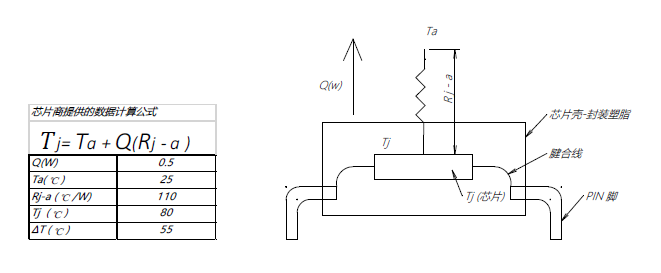Function and purpose of a heat sink
Function and purpose of a Heatsink
Objective: Reduction of temperature stress. Greater reliability and longer life
At the junctions of semiconductor components and resistances, the dissipation power (Watta) is converted into heat (Q) and causes a rise in temperature. If the temperature of the junction (Tj ) exceeds a certain maximum level, stable operation can no longer be guaranteed and the semiconductor may be damaged. Details of the junction‘s maximum permissible temperature can be obtained from the data sheet supplied by the manufacturer of the semiconductor. In cases where it is not possible to dissipate the heat adequately through the semiconductor casing into the surrounding medium (normally air), it will be necessary to mount the semiconductor on a heatsink. This enlarges the surface area of the casing, improving heat dissipation and, consequently, the reliability of the semiconductor and the whole circuit and also their useful life. A heatsink is made of materials with good thermal conductivity, generally aluminium alloys, and has a geometric structure and surface designed to optimise its functional efficacy.

The materials used are:
> T2 (C1100) for Coppler
> AL6063 for extruded aluminium profiles,
> ADC 12 for aluminium die castings,
> AL1050 ~ AL1070 (99.5%~99.7%) pure for aluminium strips
How a Heatsink works - Heat transfer and types of convection
Heat transfer: conduction, radiation , convection
Transmission of heat from a heat source (e.g. the junction of a semiconductor) via the heatsink into
the surrounding medium takes place in four successive steps:
> transfer from the heat source to the heatsink
>conduction from within the heatsink to its surface
>transfer from the surface into the surrounding medium by either free or forced convection

>radiation depending on the nature of the heatsink´s surfaces

 Thermal resistance and thermal equivalent circuit of a heat sink
Thermal resistance and thermal equivalent circuit as instruments for defining the need for, selecting and comparing heatsinks
Thermal resistance is defined as the degree of temperature increase resulting from a power input and is used as a measure for determining and comparing the heat transfer capacity of heatsinks. Thermal resistance is expressed in K/W (kelvin/watt). The heatsink and the semiconductor form a single functional unit which can be portrayed graphically as a thermal equivalent circuit in the same way as with Ohm‘s Law for an electrical circuit:
Thermal resistance and thermal equivalent circuit of a heat sink
Thermal resistance and thermal equivalent circuit as instruments for defining the need for, selecting and comparing heatsinks
Thermal resistance is defined as the degree of temperature increase resulting from a power input and is used as a measure for determining and comparing the heat transfer capacity of heatsinks. Thermal resistance is expressed in K/W (kelvin/watt). The heatsink and the semiconductor form a single functional unit which can be portrayed graphically as a thermal equivalent circuit in the same way as with Ohm‘s Law for an electrical circuit:

